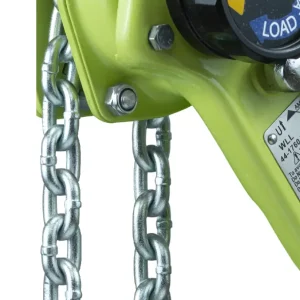“Restricted travel areas, also called no-fly zones, prohibit a crane hook from entering a working envelope to prevent collisions with building features,” said Jeff Griesemer, Vice President of Engineering and General Manager at American Crane and Equipment Corp. “The crane can be programmed to avoid specific zones, such as an office area located within a manufacturing floor.”
Creating Restricted Travel Areas for Cranes
Restricted travel area perimeters can range from a simple cubic shape to a more complex pathway, said Griesemer.
“The configuration of the crane’s controller ensures that the equipment does not enter those zones. Programming a cube shape creates the most basic restricted travel area to prohibit crane hook access to specific portions of the work area,” he continued. “For example, to block off a specific work area at either end of a work area, or its corners, or the middle.”
Further, the creation of more complex shapes or paths within a working envelope are also possible. In these instances, operators can teach a smart crane to avoid a specific area by navigating it around the perimeter of the restricted zone. Devices that enable this function include limit switches for the least complex shaped areas of avoidance to digital laser and encoder devices that enable avoidance of highly complicated boundaries.
“If there is a specific, safe load path within the working area, the crane’s programming can limit it to only perform movements within permitted pathways. Restricted travel areas can be either fixed or variable,” Griesemer added. “A fixed, or permanent zone, might be around an office structure. But other adjustments or modifications can occur later to adapt to changing floorplans or new equipment installations.”
Frequent No-Fly Zones
Restricted travel zones for overhead cranes and hoists can protect a variety of areas within a facility. These include:
Clearance Areas
Certain areas around walls, columns, machinery, and other obstacles might have limited space for the crane to move.
Walkways and Aisles
To avoid endangering personnel on foot, restricted travel zones can include walkways, aisles, and pedestrian pathways.
Loading and Unloading Zones
During the loading and unloading of materials, designating certain areas as restricted travel zones can prevent accidents during the lifting and placement of heavy loads.
Adjacent Workstations
To prevent interference or accidents, applying crane travel limitations near other workstations or operations happening nearby enhances the safety of surrounding processes.
Highly Congested Areas
In areas where multiple cranes or equipment are operating, establishing restricted travel zones helps maintain safe distances and prevents collisions.
Hazardous Material Storage
Restricting cranes from approaching zones of hazardous materials storage avoids the risk of accidentally coming into contact with these materials.
Emergency Exits
Cranes should not block access to emergency exits or evacuation routes, so these areas are typically restricted travel zones.
High Voltage or Electrical Equipment
Areas with high voltage or sensitive electrical equipment might require restricted crane travel to prevent accidental contact.
Structural Integrity Concerns
If there are concerns about the structural integrity of certain areas, limiting the crane’s movement can prevent additional stress on those structures.
Communication is Important
It’s important to have proper signage, markings, and communication systems in place to ensure that crane operators are aware of these restricted travel areas. Additionally, training for crane operators and other personnel is crucial to maintain a safe working environment and prevent accidents in these zones. Compliance with safety regulations and guidelines — such as those set by OSHA (Occupational Safety and Health Administration) — is likewise essential to ensure the safe operation of overhead cranes in restricted travel areas.
Other Technologies Improve Overhead Crane Safety and Productivity
Operations establishing restricted travel areas for their overhead cranes may also benefit from other optional features, Griesemer noted.
“Always review your entire process and your goals for the overhead crane when working with a crane builder,” he said. “Systems that enable restricted travel areas can be enhanced with other optional technologies to further improve safety and productivity.”
Several smart crane technologies — such as those that minimize load sway, mitigate off-center lifts, alert operators to potential collisions, and more — are detailed in an Overhead Alliance webinar. The “Overhead Lifting Safety Innovations Panel Discussion” is available to help overhead crane and hoist operators, maintenance personnel, owners, safety professionals, purchasers, and specifiers. It addresses both safety and productivity challenges associated with overhead lifting.





